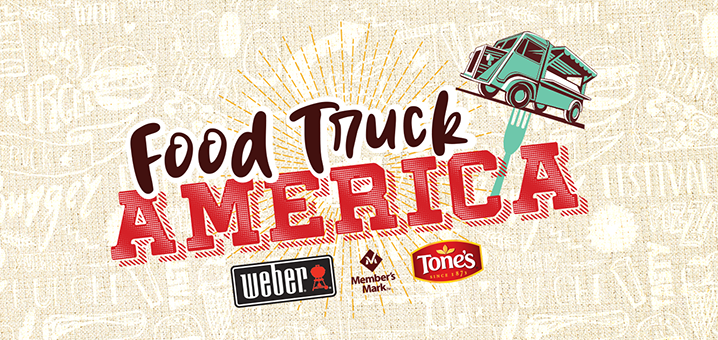Combining street food convenience and restaurant quality, mobile kitchens are bringing good, cheap food to a pavement near you
Later this year a team of British cooks and chefs is planning to head to New York to compete with counterparts in the United States.
But don’t expect any Michelin stars or fancy restaurant napkins to be wafted around.
These guys are street food vendors, and their willingness to cross an ocean to show off their skills is the surest sign yet that food trucks, also known as mobile kitchens or container restaurants, have fled their Southeast Asian nests to take on the world.
“At a time when consumers are cutting back on their restaurant spending, a van serving up fresh and inexpensive lunches and dinners is an easy sell to the public,” says food journalist Richard Johnson, who also founded the British Street Food Awards.
It is Johnson’s idea to send a British team — potentially the winners of theBritish Street Food Awards — to take on the Americans — potentially the winners of the Vendy Awards — in New York.
“If plans go through we will pile onto a container ship from Southampton — packing all of our bikes, trucks and trikes in wooden crates — to New York to take on the Yanks. Watch out! The Brits are coming!” exclaims Johnson, who also authored the best-selling book “Street Food Revolution.”
The hot dog’s PR problem solved
So what has made traditionally cheap, basic and in some cases unhygienic food vending stations suddenly turn up the gas and spread their table cloths across the globe?
For one thing, vendors have significantly improved the quality not just of their product, but of their image.
“Take hot dogs. They had a PR problem. Now they have become ‘haute dogs’,” Johnson says.
“There was the matter of the sodium nitrate. And the MSG. But ‘haute dogs’ are different. They’re made from quality cuts, stuffed into all-natural casings –- and they don’t come out of a can.”
With customers ever more knowledgeable about their food, the difference between a “hot dog” and a “haute dog” can mean the difference between a sale or a walk-by.
”Not only is it tasty, but the presentation is also amazing. You can really feel and taste how good and fresh the ingredients are,” John Andrews, a frequent customer of London food truck Street Kitchen, told CNNGo. “Very competitive. I would rather come back here than a restaurant nearby.”
Twitter twist
Then there’s the willingness of these ever-adaptable foodie people to tap into another huge trend — social media.
Given that food trucks, despite securing “spots” for weeks at a time, often move around, telling customers where to find them is crucial.
Some of the most successful food trucks — California’s Kogi, Seoul’s grill5taco, New York’s Cupcake Crew, Singapore’s world food tour, London’s Street Kitchen — are all well connected to fans via Facebook and Twitter.
Kogi started its Korean-style tacos back in 2008 and thanks to Twitter and Facebook, its popularity shot up and led the way for more food trucks in the area.

“We’re excited to bring Korean food to the masses,” Phillip Lee from Kogi (@kogibbq) told The Korea Times.
For grill5taco’s (@grill5taco) Kim Hyun-chul, who started his food truck in 2009 and opened his first restaurant last year, it was the other way around: introducing Korean-style tacos to the Korean public.
“My idea was to bring something new to the rather boring and old food truck scene here,” Kim tells CNNGo.
And connecting daily with potential customers allows you to sell yourself a little too.
Street Kitchen (@streetkitchen), run by Mark Jankel and Jun Tanaka in London — serves around 150 patrons per day and highlights its organic and sustainable credentials.
“We have spent two years making contact and forging relationships with some amazing growers and producers. We were determined to source 100 percent British ingredients and to have an understanding of their production methods,” Jankel says.
Good food, good business
It all makes for some pleasing numbers.
In a survey released by Technomic last year, 91 percent of consumers said they saw food trucks as having staying power, while various cities saw jumps in the number of such trucks, including Austin, Texas, which now has more than 1,600 food trucks up from 650 in 2006.
There are now more than 3,000 licensed food trucks in the United States, according to Richard Myrick, founder of Mobile Cuisine.com, while Seoul has more than 2,000 according to the Korea Street Vendors Confederation.
For anyone looking to get into the industry, it can be a relatively cheap foot in the door.
“A street food trader can be vanned-up and ready to go for less than £3,000 (US$4,770). And earning –- on a good day at Glastonbury –- more than £10,000 a day. Cash in hand,” says Johnson.
But as always, success comes at a cost — hard work.
A typical day for Street Kitchen’s Jankel and Tanaka starts at 6 a.m. After picking up the vegetables that have arrived overnight from farms and preparing, cooking and loading the ingredients for a few “furious” hours, the crew heads to the city around 9.30 a.m.
“It can become a logistical nightmare,” Jankel explains.
Find the entire article by Rachel Sang-hee Han at CNNGO.com <here>




